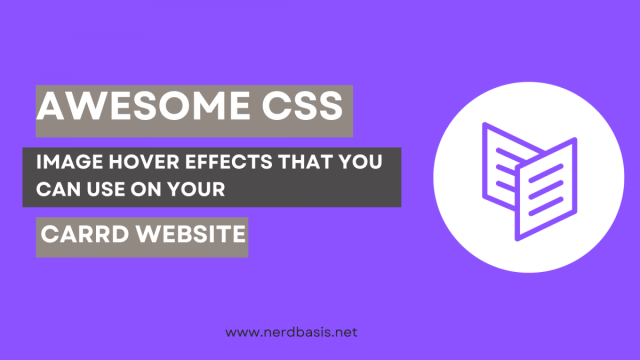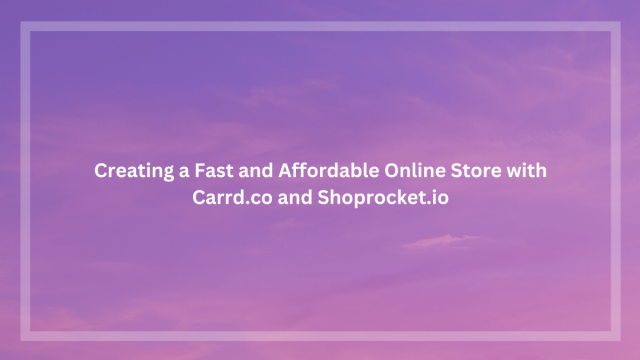
One-Page Website Benefits: Streamline Your Online Presence
Discover the top benefits of a one-page website and why it could be the game-changer your business needs. Read on for insights!
Introduction
Gone are the days when a sprawling website was the only way to make an impact online; let’s talk about the sleek efficiency of one-page websites. These streamlined sites cut through the clutter, offering a focused and immersive experience that resonates with today’s fast-paced digital audience. But why are they becoming increasingly popular, and what can they do for your business? As we delve into the world of one-page websites, we’ll uncover their unique ability to captivate visitors, encourage direct action, and convey your brand’s story in a compelling, singular narrative. Get ready to explore how simplifying your online presence could lead to a stronger, more memorable connection with your audience.
Understanding One-Page Websites
Before diving into the benefits, it’s essential to understand what a one-page website involves—simplicity meets functionality. This approach to web design is rooted in delivering a seamless user experience where all content is presented on a single page. It’s an efficient structure, often leveraging scrolling or anchor links for navigation, which can lead to a more immersive and straightforward user journey.
Key Characteristics:
- Fluid Navigation: Users scroll through content as if reading a story, without the disruption of loading new pages.
- Content Hierarchy: Strategically ordered information guides visitors through your message and offerings.
- Visual Continuity: A cohesive design aesthetic is maintained throughout, enhancing brand identity.
You may wonder, “How does a one-page layout fare in a multi-page world?” The answer lies in its unique ability to convey a focused narrative. By presenting information in a logical flow, one-page websites encourage visitors to take a journey from introduction to call-to-action, effortlessly. When executed correctly, this format can be a powerful tool for storytelling, branding, and conversion optimization. However, it’s crucial to balance the minimalist design with adequate content that serves users’ needs without overwhelming them. For a deeper dive into one-page website design principles, Smashing Magazine offers a comprehensive guide that’s worth exploring.
SEO Considerations for One-Page Websites
But what about SEO? At first glance, a one-page website might seem limited in terms of search engine optimization. Yet, when built with SEO in mind, these sites can indeed rank well. The trick is to focus on strong, relevant content and to use semantic HTML5 elements to structure it, making it easy for search engine crawlers to understand and index the site. With proper use of keywords and meta tags within a single page, you can target a specific audience effectively. Moreover, the inherently mobile-friendly nature of a single-page website aligns perfectly with Google’s mobile-first indexing, adding to its SEO potential. For examples of SEO-friendly one-page designs, Awwwards showcases some of the best in the industry.
Enhanced User Experience
At the heart of one-page websites lies an uncluttered path to a better user experience. By simplifying the journey, visitors are treated to a seamless interaction with your brand, making every scroll count.
Ease of Navigation
Say goodbye to complex menus; a one-page layout guides users effortlessly. Intuitive scrolling replaces cumbersome clicks, ensuring that vital information is never more than a flick away. The one-page site becomes a storytelling canvas, engaging visitors with a coherent, chronological flow.
Faster Load Times
With less to load, one-page websites often mean reduced waiting times for visitors. Optimized media and streamlined coding boost performance, contributing to a snappier user experience. This increased speed not only satisfies users but can also enhance search engine rankings, as page load time is a known SEO factor.
Mobile-Friendliness
In a mobile-first world, the one-page format aligns perfectly with on-the-go browsing. Responsive design adapts to different screen sizes, making navigation a breeze on any device. With mobile internet usage skyrocketing, a one-page website ensures your brand is accessible anywhere—a vital component in today’s digital landscape.
Cost-Effective Solution
One-page websites aren’t just about aesthetics; they’re also a wallet-friendly choice. Opting for a single-page design can significantly reduce the financial burden of going digital, making it an ideal solution for startups and small businesses looking to establish an online presence.
Lower Development Costs
With fewer pages to develop, you’ll save on upfront costs without cutting corners on quality. Simplification of the design process leads to fewer hours spent by designers and developers, which translates to lower billing rates. Moreover, a focused approach ensures that every element on your page serves a purpose, aligning with your brand’s objectives efficiently.
Simplified Maintenance
Maintaining a one-page site is straightforward, keeping long-term costs down. Ease of updates means you can make changes quickly and painlessly, without the need to navigate through a complex site structure. With streamlined content, the scope for bugs and errors reduces, meaning less time and money spent on troubleshooting and technical support.
Economical Hosting Requirements
Smaller websites demand less server space, which means hosting can be more economical. Reduced bandwidth usage not only cuts costs but also contributes to faster loading times, enhancing user experience. By opting for a one-page website, you’re likely to fit within the lower-tier hosting plans, which are often more than sufficient for a single-page site.
SEO Advantages of a Single-Page Site
When it comes to SEO, one-page websites have unique advantages that can bolster your online strategy. They’re not just trendy; they’re tactical. A well-crafted single-page website concentrates all its SEO efforts into a unified location, amplifying relevance and authority from the get-go.
In this section, we’ll delve into the specific SEO perks that single-page sites offer and how they can give you an edge in the digital landscape.
Focused Keyword Strategy
A single page allows for a concentrated effort on a specific set of keywords. This focus simplifies the optimization process, enabling you to curate content that resonates deeply with your core topics. With no need to spread your SEO endeavors across multiple pages, you can funnel all your keyword research and optimization into one powerhouse page that packs a punch.
- Simplified Optimization: Streamline your SEO tasks by targeting a curated keyword cluster.
- Enhanced Relevance: Increase the page’s relevance for core topics, improving search engine rankings.
-
Optimized Content: Tailor every element on the page to your chosen keywords, from headings to metadata.
Reduced Bounce Rates
Engaging content on one page can keep visitors hooked, potentially reducing bounce rates. When users find what they’re looking for without clicking through multiple pages, they’re more likely to stay and engage. A single-page site eliminates the need for unnecessary navigation, fostering a smoother user experience that translates to better SEO outcomes.
- Streamlined Navigation: Keep users on track with straightforward, scrollable content.
- Improved User Engagement: Capture and hold attention with a cohesive narrative flow.
-
Lower Bounce Rates: Visitors linger longer, signaling content relevance to search engines.
Enhanced Link Equity
All backlinks direct to the main page, consolidating link equity and boosting SEO power. Every single external link becomes a vote of confidence for your one-page site, enhancing its authority in search engine algorithms. This concentrated link equity not only strengthens your SEO position but also simplifies the management of your backlink profile.
- Unified Link Authority: Aggregate all external link value into a single impactful page.
- Easier Backlink Management: Monitor and optimize one link profile for targeted SEO gains.
-
SEO Leverage: Use consolidated link equity to climb search engine rankings more effectively.
Streamlining Brand Messaging
A one-page website is a canvas for clear, compelling storytelling that resonates with your audience. By eliminating the clutter of multiple pages, your message becomes the focal point, making it easier for visitors to understand your brand’s value proposition and engage with your content.
Consistent Narrative
Deliver your brand story without the interruptions of page changes. A seamless narrative journey maintains the user’s focus and cultivates a stronger connection with your brand’s identity. This continuity is vital in forging a memorable brand experience that encourages customer loyalty.
Visual Storytelling
Use the vertical scroll to create an engaging visual narrative that captures attention.
- Simplicity: Amplify the power of your message with clean design elements.
- Imagery: Employ striking visuals that convey your brand’s ethos.
- Animation: Integrate subtle animations to highlight key points and keep users intrigued.
Immediate Call-to-Action
Strategically placed CTAs can guide users to take action without distractions. A one-page layout fosters a direct pathway to conversion, making it simpler for users to decide and act. This streamlined approach can effectively increase conversion rates and grow your customer base.
Conclusion
In the digital age where less is more, the benefits of a one-page website can catapult your online presence to greater heights. By embracing the streamlined simplicity of a single-page design, you position your brand as a bastion of modern efficiency.
Reflect on the clarity and ease that a one-page website provides to your visitors. It’s a potent reminder that when it comes to web design, sometimes the most powerful statement is made with a single, well-organized page. If you’re ready to take the plunge and simplify your online presence, explore some impeccably crafted Carrd Templates that can set you on the right path.
FAQs
What exactly is a one-page website and how does it differ from traditional websites?
A one-page website is a single HTML page that contains all the content a user might need, typically with a navigation menu that links to different sections of the page. Unlike traditional multi-page sites, it doesn’t involve navigating to different pages, which can streamline the user experience and make information more accessible.
How can a one-page website improve my SEO?
One-page websites can improve SEO by focusing on a targeted keyword strategy, which strengthens your site’s relevancy for those terms. With all backlinks pointing to the same page, there’s a consolidation of link equity, which can enhance the page’s authority and ranking. Additionally, engaging content can lower bounce rates, another factor that search engines may reward.
Are there any disadvantages to one-page websites?
While one-page websites offer various benefits, there are some drawbacks. They may not be suitable for businesses with extensive content needs, as the single-page format can limit the amount of information presented. Also, if not designed thoughtfully, they can face challenges with SEO, as there’s only one set of meta tags to optimize, and keyword targeting can be restrictive.



Leave a Reply